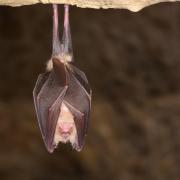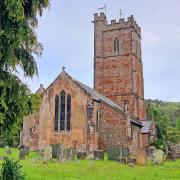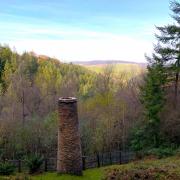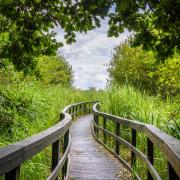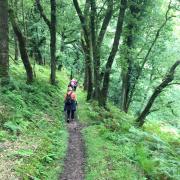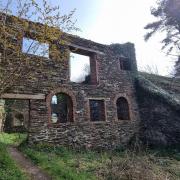The SASP team are always introducing new walks to our schedule and together with Steve at WWT Steart Marshes, our new walk on Sedgemoor is a slightly more advanced Level 2, and is fully accessible. (All SASP walks are graded. Level 2 walks are intermediate walks of up to 3 miles, ideal for those looking to develop their walking fitness and able to complete 45-60 mins with minimal stops)
With a wealth of knowledge about Steart Marshes to share with walkers, our guides will talk about the development of this innovative working wetland site, WWT’s stewardship of the area as well as the significant and increasingly diverse flora and fauna to be found here. There is growing evidence that spending time in ‘blue spaces’ i.e. near or around water, is beneficial for our wellbeing, and that lies at the heart of this walk. A chance to be gently curious about, and to connect with nature in the company of others who wish to do the same.
Steart is a small village in Somerset and lies in an isolated position on the Steart Peninsula on the Bristol Channel coast and is about 6 miles north of Bridgwater. WWT Steart Marshes is a large demonstration wetland started ten years ago which has created new saltmarsh habitat to replace that lost by ‘coastal squeeze’. It has value as a carbon ‘sink’, stores floodwater, improves water quality, supports agriculture e.g. grazing lamb and beef, and provides a large, attractive family-friendly area for exercise and recreation.
LET'S GET GOING
1. Start at the main car park for WWT Steart Marshes on Stert Drove, TA5 2PU (What Three Words location: baked.masts.birds.) This three-mile walk takes about 50 minutes. Before leaving the car park check the recent sightings board to get an idea of what birds are about in this extensive nature reserve.
2. Cross Stert Drove and enter the main reserve. Keep an eye out for nesting swans near the decking area. To follow this circuit anticlockwise, turn right and follow the path heading inland towards the escarpment, meandering through tall, golden reeds. On the left you will see the unusual feature of a designated dog swimming area.
(Optional diversion: Ahead on the right is a gate which gives access to the road, the hamlet of Otterhampton and the redundant church of All Saints, now under the care of the Churches Conservation Trust. It has a Norman tub font, and a late medieval chancel screen, and is a peaceful place to visit.)
3. Stay on the path as it swings left, following the course of South Brook and keep an eye out for kingfishers. Climb up onto the raised hide for excellent views across onto the Otterhampton Marshes. This area of brackish lagoons is especially good for ground-nesting avocet, and their fluffy chicks are easy to spot in June so keep your eyes peeled.
4. Continue through a gate onto Otterhampton Common, and the village of Combwich, on the banks of the River Parrett. Formerly the site of an ancient ferry crossing, and later a busy port, its principal export was bricks and tiles from local manufacturer, Colthurst, Symons and Co. More recently, Combwich Wharf has been refurbished to enable AILs (Abnormal Indivisible Loads) access to nearby Hinkley Point C Power Station construction site.
5. Leave the common through a gate and continue along the path with the wide tidal River Parrett on your right. The river begins in Chedington, West Dorset before flowing through South Somerset including Langport and the Levels to open into Bridgwater Bay. Occasionally it is possible to spot harbour porpoise in the river. At low tide the hulks of scuttled barges are visible.
6. On reaching the Parrett Hide turn left away from the river to enjoy views of the recently established saltmarsh and tidal creeks. The Mendip Ridge is clearly visible, extending to Brean Down and across to Steep Holm island, with Flat Holm tucked behind.
Descend the gentle incline with the embankment on your right. Early summer brings vast expanses of Ox Eye Daisies and rich meadow grasses. Where the path divides, stay right and visit the Mendip hide or pause on the benches there to enjoy a full panorama of the circuit. From here it is a 5-minute walk back to the car park.
GOOD TO KNOW
1. The WWT reserve is free to park and enter, however donations are always welcome and can be made using the card reader near the entrance.
2. There are toilets available.
3. Ice creams are available for purchase, typically on summer holiday weekends.
4. On Sundays the pop up Live Free Kitchen is often on site supplying excellent coffee, vegetarian food and cakes.
5. There are plenty of benches dotted along the route, and several bird hides to take shelter in.







